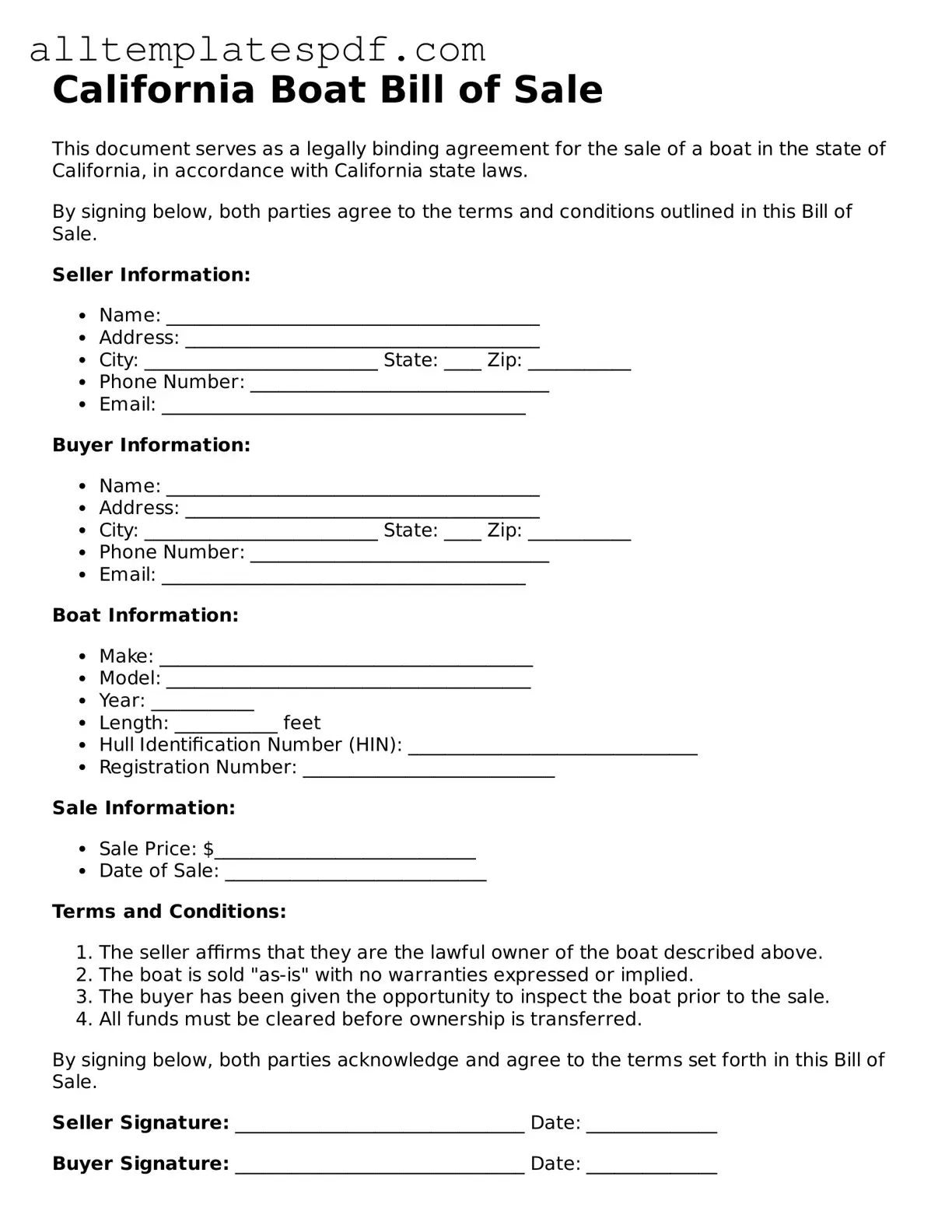Blank Boat Bill of Sale Template for the State of California
The California Boat Bill of Sale form is a legal document that records the transfer of ownership of a boat from one party to another. This form is essential for both buyers and sellers, as it provides proof of the transaction and outlines the details of the sale. To ensure a smooth transfer process, it’s important to fill out this form accurately.
Ready to complete your boat sale? Click the button below to get started!
Open Editor
